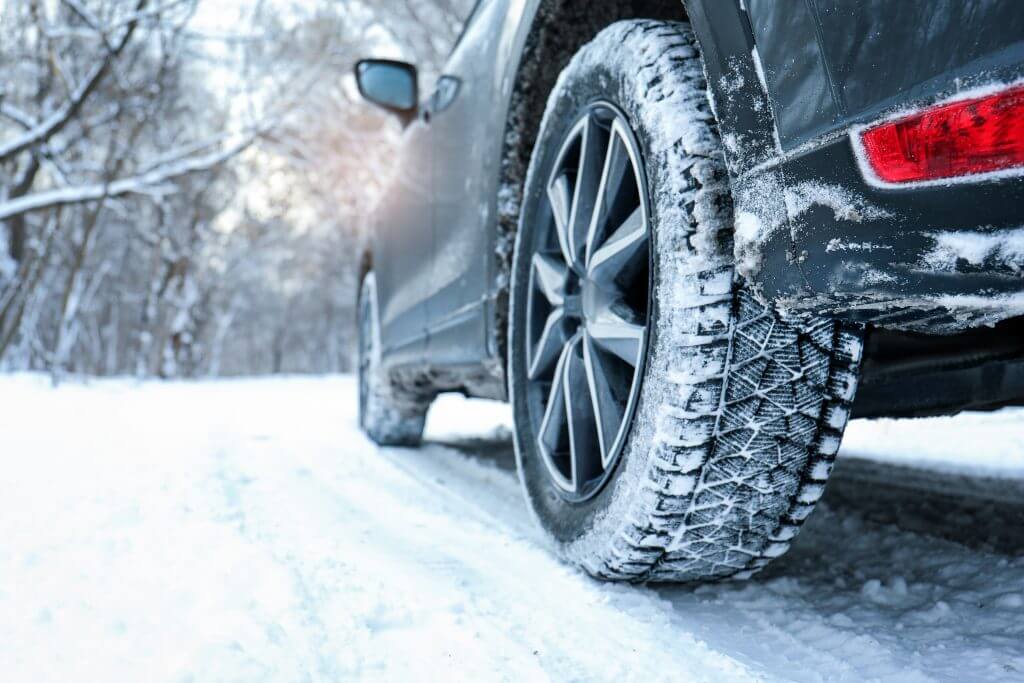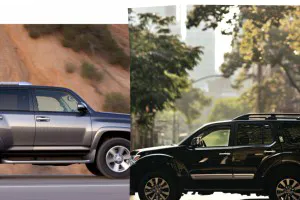Wondering how to best prep your car for winter? These 7 simple tips will help you winterize your car and maximize performance and safety in snow and ice. Brutal winter weather can take a toll on your vehicle, both inside and out. Frigid temperatures can lead to dead batteries, flat tires, brittle belts, and a host of driveability issues. Before temperatures drop too low, follow this 7-step checklist on how to winterize your car to protect you and your vehicle.
1. Check Your Car Battery
Low temperatures can drain power from your car’s battery, but just because it’s getting colder, that doesn’t mean you need to go out and buy a brand new battery.
Most batteries will last 3-5 years depending on the battery and your vehicle. You can avoid the hassle of a dead battery by keeping connections tight, clean, and free of corrosion and by routinely checking your battery voltage in winter.
Your battery’s resting voltage should be between 12.0 and 13.1 volts and when your car is running, it should be between 13.7 and 14.7 volts. Use the free FIXD app to easily check your battery’s resting voltage and track your battery replacement dates.
2. Check Your Tires
The only thing worse than a flat tire… is a flat tire in the dead of winter. The last thing you need is to be stranded in dangerously cold conditions. Here’s what you can do to combat a roadside emergency:
Check tire pressure more often than you normally would during the winter (about once a week). As cold temperatures cause the air in your tires to contract and lose pressure, you’ll be able to avoid uneven tread wear and improve safety in inclement weather.
You can also use the FIXD app to track the life of your tires and see exactly when you need to replace them based on your driving habits.
Winter Tires vs. All-Season Tires
When winterizing your car, something else to consider is what type of tires to buy, especially if you’re concerned about your car getting stuck in the snow and ice.
Car and Driver magazine put snow tires to the test in an icy drag race and found that snow tires really did make a huge difference, both in safety and performance. The car equipped with snow tires had better grip and braking performance and was able to corner safely without any issues.
If your vehicle tires don’t pass the Penny Test, or if you live in an area where snow and ice make up a large chunk of the winter, check out the best car tires to buy in 2020. Here, you’ll find our FIXD Mechanic reviews for both all-season tires and winter tires.
3. Check Your Windshield Wipers
Generally, windshield wipers last 1-2 years regardless of rainfall. However, when temperatures drop below freezing, it can cause the rubber on your car’s wiper blades to become brittle and break. Not something you want to realize while driving home in a snowstorm.
Some drivers also experience icy buildup on their wipers when driving in heavy snow. This causes visibility issues and can break weaker blades. For these reasons, manufacturers make specialized winter wiper blades that are much sturdier than a summer blade and prevent icy buildup. Most winter wiper blades cost between $10-$30.
But, are winter wiper blades worth it just for one season? That depends largely on your driving habits and how long and cold winters are where you live. But if you’re considering buying new wipers, here are our top picks for best winter wiper blades.
4. Check Your Fluids
Antifreeze
Antifreeze, also known as engine coolant, prevents the water in your engine from freezing during cold winter months and prevents overheating in hot months. Without the proper amount of antifreeze, your car’s cooling system could freeze causing fatal damage to the engine.
Be sure to check your car’s antifreeze levels and never, ever pour straight water into the cooling system. You can purchase pre-mixed antifreeze or concentrated forms, which are usually diluted as a 50:50 to 70:30 solution of antifreeze to water. Always consult your owner’s manual first to ensure a proper ratio for your vehicle to prevent freezing.
Wiper Fluid
Heavy snows can drain wiper fluid fast. Keep the reservoir full by checking it frequently and be sure to use a windshield wiper fluid that is formulated for winter conditions.
Oil
When it drops below zero, the oil in your vehicle can become thicker and more viscous like molasses, making it harder for your engine to circulate it and stay lubricated.
If you live in sub-zero temperatures for much of the winter, it may be a good idea to switch to a synthetic oil. Also check your owner’s manual for specific oil weight recommendations for cold weather.
Gasoline
Is your gas tank less than half full? If so, fill it up and keep it there. Not only will this ensure you have a means of staying warm in the event of an unexpected breakdown, but it also helps prevent moisture in your fuel lines from freezing and clogging.
5. Check Your Belts & Hoses
Since environmental factors like cold winter weather can negatively impact your car’s belts and hoses, leaving you stranded, it’s always a good idea to check them before winter hits in full force.
The serpentine belt is located at the front of the engine and looks like one long snake that winds around your alternator, power steering pump, and air conditioning system to keep your car running smoothly.
When inspecting your serpentine belt or hoses, list for symptoms such as squeaking and grinding noises, as well as any signs of brittleness or cracking. Routine maintenance of these critical engine components will help you avoid breakdowns and costly repairs.
6. Check Your Brakes
When’s the last time you did a brake check? Now is a great time to ensure your brake pads and rotors are in good shape so you’ll have no trouble slowing down in ice and snow.
A quick Google search will tell you the “minimum brake pad thickness” recommended for your specific vehicle. Thickness is often measured in millimeters and each millimeter of thickness can get you through about 5000 miles of driving.
7. Pack a Winter Emergency Car Kit
Last but not least, to fully prepare your vehicle for winter, make sure your trunk is equipped with a Winter Car Kit that contains:
- Jumper cables
- Extra antifreeze
- Car tool kit
- Snow chains
- Ice scraper
- First aid kit
- Matches and flares
- Flashlight and batteries
- Thermal blanket (in case you get stranded in the snow overnight)
- Extra winter clothing (i.e. coat, hat, dry socks, boots, etc.)
- Non-perishable food items (protein or energy bars)
Is Your Car Road-Ready for Winter?
Use this 7-point checklist as your guide and let us know if you have other car winterization tips and tricks that have helped you in the past! If you’d like to access the free FIXD app referenced in this article to track tire and battery life, get routine maintenance alerts for your specific vehicle, and diagnose your check engine light in seconds with your phone, click here to learn more.

Lifelong automotive enthusiast with a soft spot for offroading. Wrencher turned writer, but I still love to tinker on just about anything with an engine. Dream car: tie between a ‘71 Hemi ‘Cuda and a ’91 GMC Syclone. #GirlDad #SaveTheManuals














